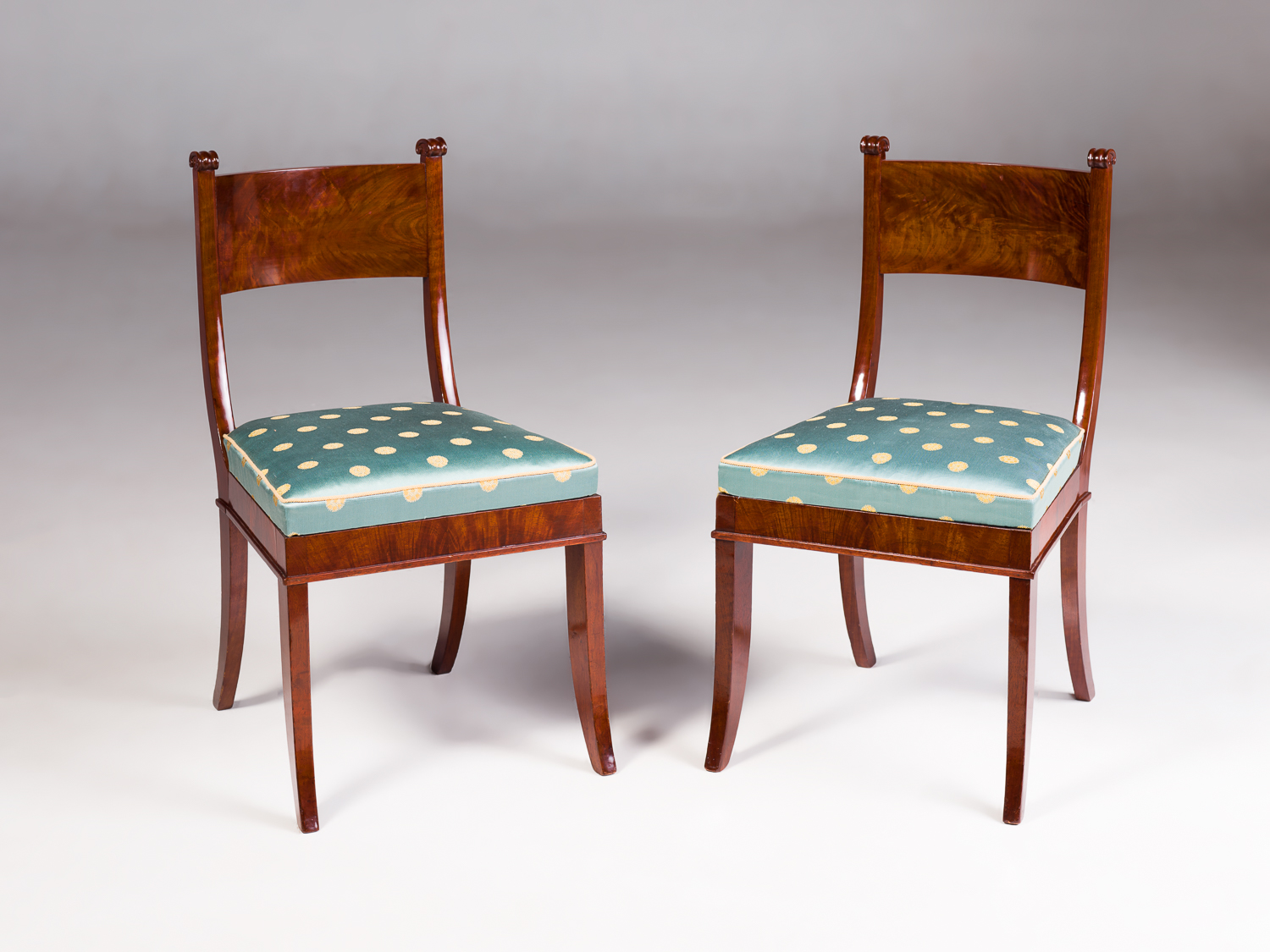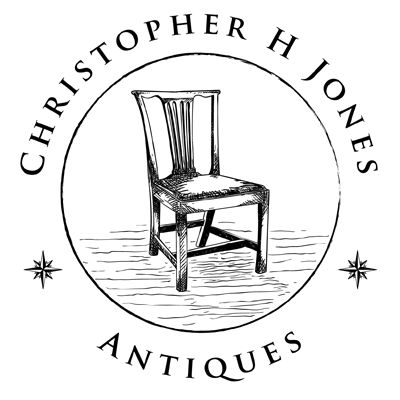Pair of Classical Side Chairs, attributed to Richard Parkin (1787-1861)
Philadelphia
Circa 1834-1840
Mahogany, mahogany veneer
Box seats upholstered in horsehair
H: 33.75”; W: 18.25”; D: 21”
Richard Parkin (1787-1861) was an English born cabinetmaker who immigrated to Philadelphia in the early years of the 19th century. The first record of him on these shores is as one of three cabinetmakers responsible for the Philadelphia Book of Prices, published in 1811 suggesting that by age 26, he had already achieved some success as a cabinetmaker in that city. Between the years 1820 and 1825 Parkin is listed in partnership with cabinetmaker Thomas Cook (1786-1868) at 56 Walnut Street in city directories. Their partnership spanned 13 years in all, becoming one of the largest and most important shops of the Classical period in Philadelphia. After 1829, both Parkin and Cook began working outside the partnership at separate addresses.
Among the most significant and best known pieces by the firm is an important sideboard in the collection of the Baltimore Museum of Art bearing the Walnut Street label and dating to 1826-1833. Inspired by a design in Thomas Hope’s 1807 Household Furniture, it is pictured in Wendy A. Cooper’s Classical Taste in America 1800-1840 (Baltimore Museum of Art, 1993), p. 56.
When the partnership dissolved, Parkin worked alone at 94 South Third Street and in 1835 he leased a building from fellow cabinetmaker Joseph Barry at 134 South Second Street also known as Egyptian Hall, where he worked until 1848. Parkin enjoyed one of the longest careers of any Philadelphia cabinetmaker and consistently produced fashionable furniture that revealed a deep knowledge of English and French pattern book designs and the skills to translate these patterns into high style furniture for American tastes. Parkin, according to Classical furniture scholar Carlswell Rush Berlin, “manifests that level of creativity that enabled the very best American cabinetmakers to move beyond the pattern book to create a wholly original and successful design.”[i] These chairs, with their adherence to the strictest of classical design and proportion, their restrained decoration and unique carved capitals are excellent examples of Parkin’s creative abilities and skillful execution.
The standard for identifying chairs made by Richard Parkin is a set of 11 chairs all bearing the label: RICHARD PARKIN/CABINET-MAKER/EGYPTIAN HALL/134 SOUTH SECOND STREET/Philadelphia (now in the collection of the Landis Valley Farm Museum, Lancaster PA). Based on these labeled examples several undocumented chairs, including this pair with similar legs, rear stiles that terminate in stylized and idiosyncratic Ionic capitals and tablet backs can be attributed with confidence to Parkin.
sold
[i] See American Furniture 2013, “A Shadow of Magnitude: The Furniture of Thomas Cook and Richard Parkin.” Carswell Berlin pp 156-195. The majority of the scholarship on Cook and Parkin is a result of the research Carlie Berlin has published on the work of these important Philadelphia Classical period cabinetmakers.


